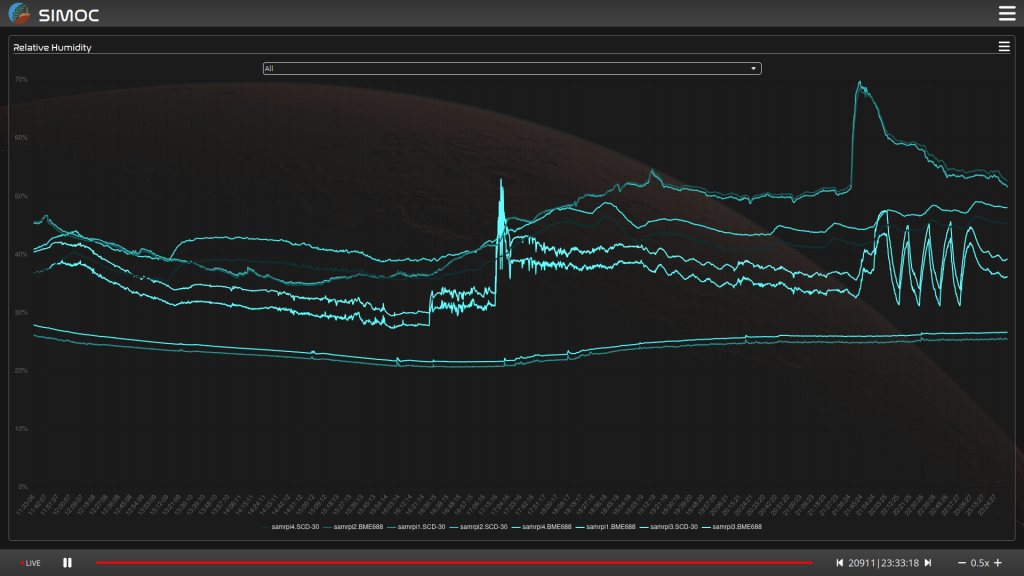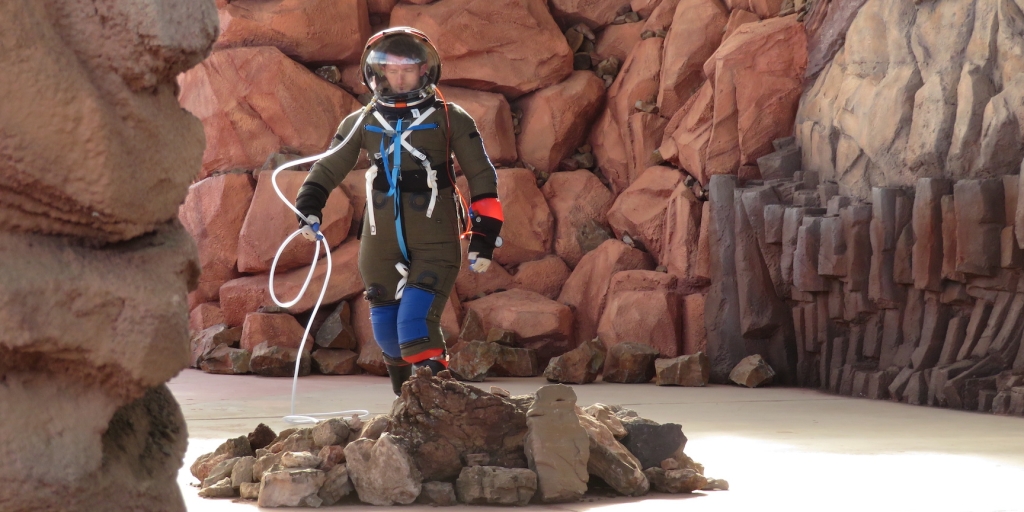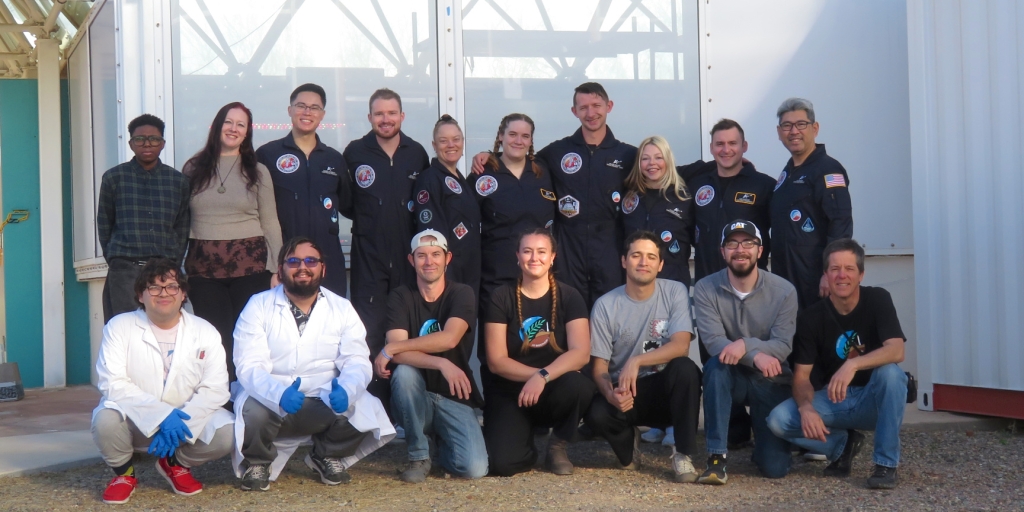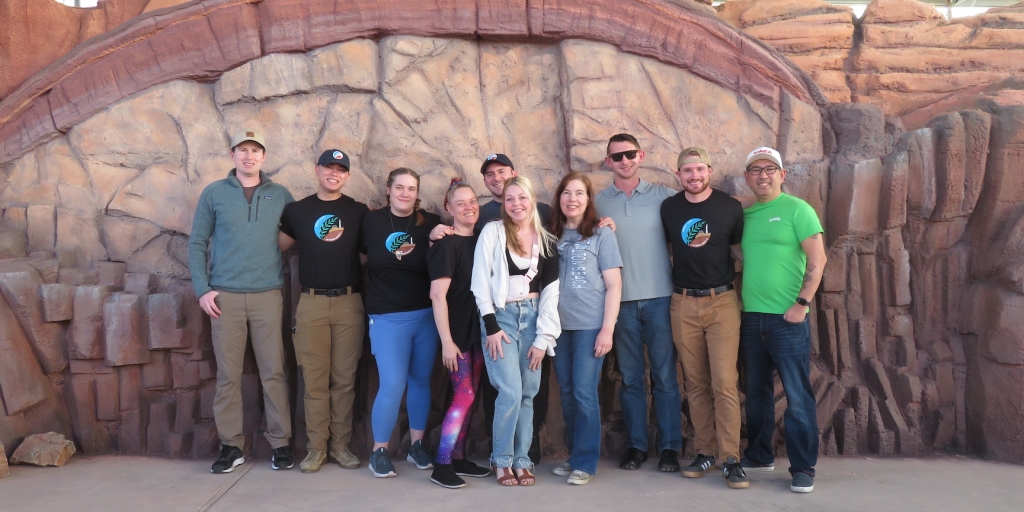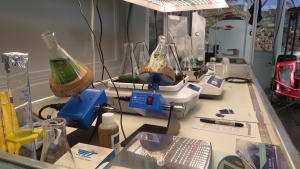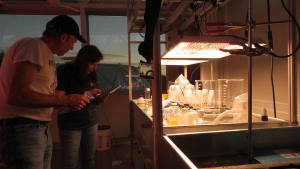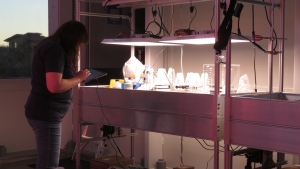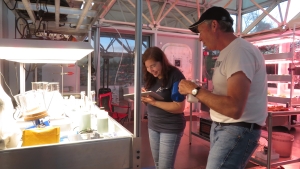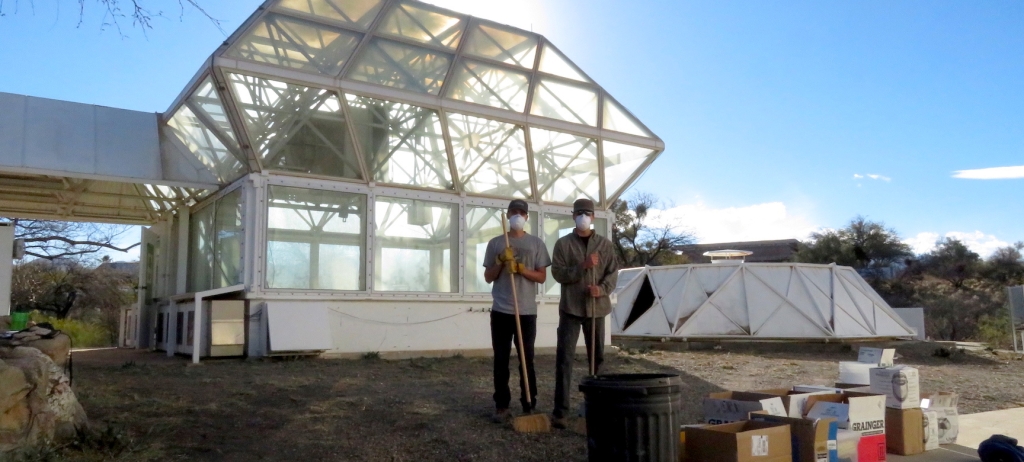APUS ARG-1S Red Crew Egress
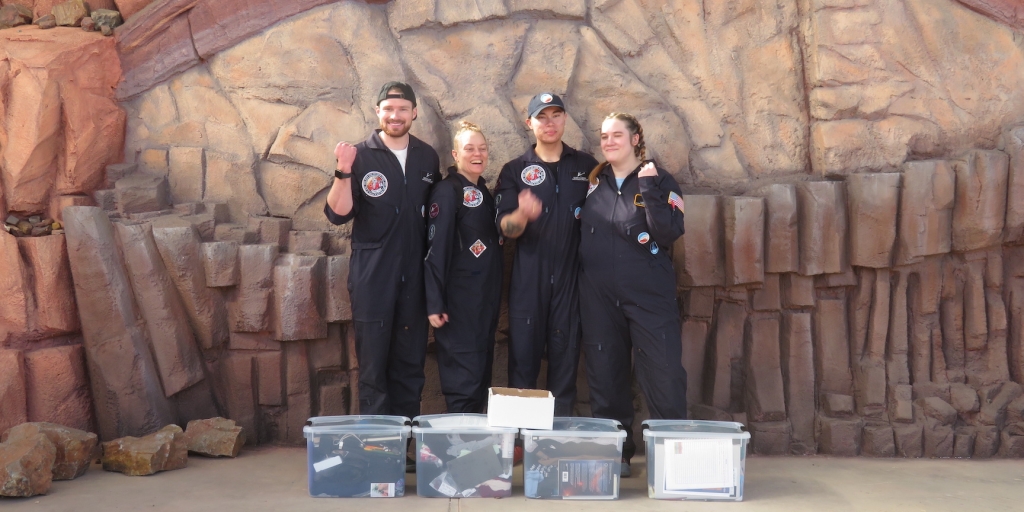
APUS ARG-1S Red Crew Keston Denhalter, Aedanaya Diamond, Gilbert Wilkerson, and Commander Laura Rieske egressed from the SAM research vessel today, February 18, at 10:03 am. They were met in the SAM Mars yard by the members of the Blue Crew and Mission Control.
In the debrief that followed at the SAM Operations Center, the mission was described as a complete success with all science objectives met, data collected on several vital systems (CO2, RH, potable water, hydroponics), and a successful Mode 3 run in which the vessel was fully sealed for four hours.
Photos and narrative coming soon!


